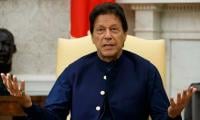Pakistan is an agricultural economy, and it is important to reinforce the real contribution of agriculture to Pakistan’s GDP. While its direct weightage is approximately 23 per cent, its indirect contributions are in the north of 45 per cent.
This is based on backward and forward links determined by the ADB between agriculture and other sectors of the economy, as calculated by the Bank of Punjab (BOP) research team in a joint project with PIDE and the Planning Commission.
More importantly, the agriculture sector has to move towards sustainability and nature positivity. This will require Pakistan to strike a balance between economic compulsions and ecological limitations. The country’s greenhouse gas (GHG) emissions from agriculture are less than 2.0 per cent of the global GHG emissions linked with agriculture.
Pakistan emits 0.2 billion tonnes of CO2 equivalent out of the total 10.5 billion tonnes of CO2 equivalent from global agriculture. The potential for sustainable agriculture is indeed enormous.
And to begin this journey to sustainability, we have to start from crops. There is a need to replicate the model used to increase maize yields for other major crops. In the last 10 years, maize cultivation has seen a growth of 49 per cent.
Import indigenization and enhancing exports also provide a huge opportunity to the country to move forward. Pakistan currently spends $10 billion on agriculture imports and earns $5 billion from the exports of its agricultural products (almost half of it comes from rice alone). Pakistan has the potential to move the equation upside down if it focuses on increasing its crop production.
Besides agriculture, aquaculture offers the country a huge opportunity to grow. Pakistan has a coastline of 1,046km with exports close to $500 million which have been stagnant for a while. The potential, however, is over $2 billion as per the findings by the BoP and SDPI research teams on the blue economy.
The other area is meat exports. At present, the contribution by this segment is only $350 million, whereas it is believed to have a potential of over $10 billion alone after three to five years of concentrated and committed initial investments.
Fruit and vegetables have less than $500 million of exports as most of it is wasted due to supply-chain constraints and/or the lack of branding, an upside potential of about $5 billion.
This sector is a victim of four levels of inflation: imported – directly and indirectly (through the inputs including energy); demand-pull – given food’s essential nature, the demand remains strong irrespective of other factors on supply-side; greedflation – greed of wholesalers and retailers in an environment of increasing prices and inflationary pressures making things even more complicated for consumers while wholesalers get away with demanding their ‘greed margin’ in prices; and shrinkflation – where consumers get less for their value for money in packed food as the quantity is reduced by the seller to keep their profit margins intact.
Food insecurity and human development are a real threat to the sector other than multifaceted inflation – directly impacting livelihood, nourishment, gender participation, etc.
Alarmingly, 36.9 per cent of households in Pakistan are labelled as ‘food insecure’, within which 18.3 per cent face ‘severe’ food insecurity, according to the National Nutritional Survey of 2018 conducted by the Ministry of Health in collaboration with Unicef. The per capita consumption of food products that possess high nutritional value like beef, chicken, fish, milk, vegetables and fruit, is almost 6-10x lower than that of developed countries. Also, the prevalence of stunting in children under five years in Pakistan is 37 per cent – much higher than 31 per cent in continental Africa.
Pakistan’s population is 241 million – growing at 2.55 per cent. This is an 83 per cent increase over a period of 25 years (up from 132 million in 1998). The country’s population is estimated to surpass 400 million by 2050 as per the UN – an increase of 66 per cent.
This unstoppable population increase coupled with changing dietary patterns will increase food requirements by 2x. This is much more than the global food requirement increase of 60 per cent during the next 27 years.
Sustainable agriculture in Pakistan is intrinsically linked to livelihoods. Smallholder farmers, constituting a significant portion of the population and approximately 67 per cent of rural women, confront the issues of resource constraints and heightened vulnerability to climate change.
Food waste is another area of concern. In the UK, the average family tosses away at least GBP60 worth of food each month, according to estimates from the climate group WRAP. Globally, nearly 30 per cent of agricultural land is used to produce food that ends up lost or wasted, as highlighted by the UN.
The primary culprits in food waste are consumers, with households responsible for 70kg of the 131kg of food wasted per inhabitant in the EU in 2021, according to Eurostat data. This number would be even bigger in Pakistan given our eating habits, fragile food storage logistics/dynamics, and absence of food waste management technology.
Budgeted government subsidies to agriculture makes this sector the second biggest beneficiary of subsidies in Pakistan after energy – directly or indirectly, implicit or explicit in cash. There are many pockets from where this sector gets support and rightly so. However, the real impact of these subsidies is not visible.
As per a PIDE report from 2021, subsidy to the fertilizer sector alone for the benefit of agriculture came out to be Rs200 billion. The same goes for commodity subsidies, particularly wheat – the stock of which currently stands at Rs1 trillion. Similar is the case with other subsidies extended to this sector.
The benefits of these subsidies are surely not evident in productivity results. One can safely conclude that subsidies to the agriculture sector are not adequate enough and grossly mismanaged.
To be continued...
The writers are development and social-impact-focused bankers.
Data, today, defines how we make decisions with tools allowing us to analyse experience more precisely
But if history has shown us anything, it is that rivals can eventually unite when stakes are high enough
Imagine a classroom where students are encouraged to question, and think deeply
Pakistan’s wheat farmers face unusually large pitfalls highlighting root cause of downward slide in agriculture
In agriculture, Pakistan moved up from 48th rank in year 2000 to an impressive ranking of 15th by year 2023
Born in Allahabad in 1943, Saeeda Gazdar migrated to Pakistan after Partition







